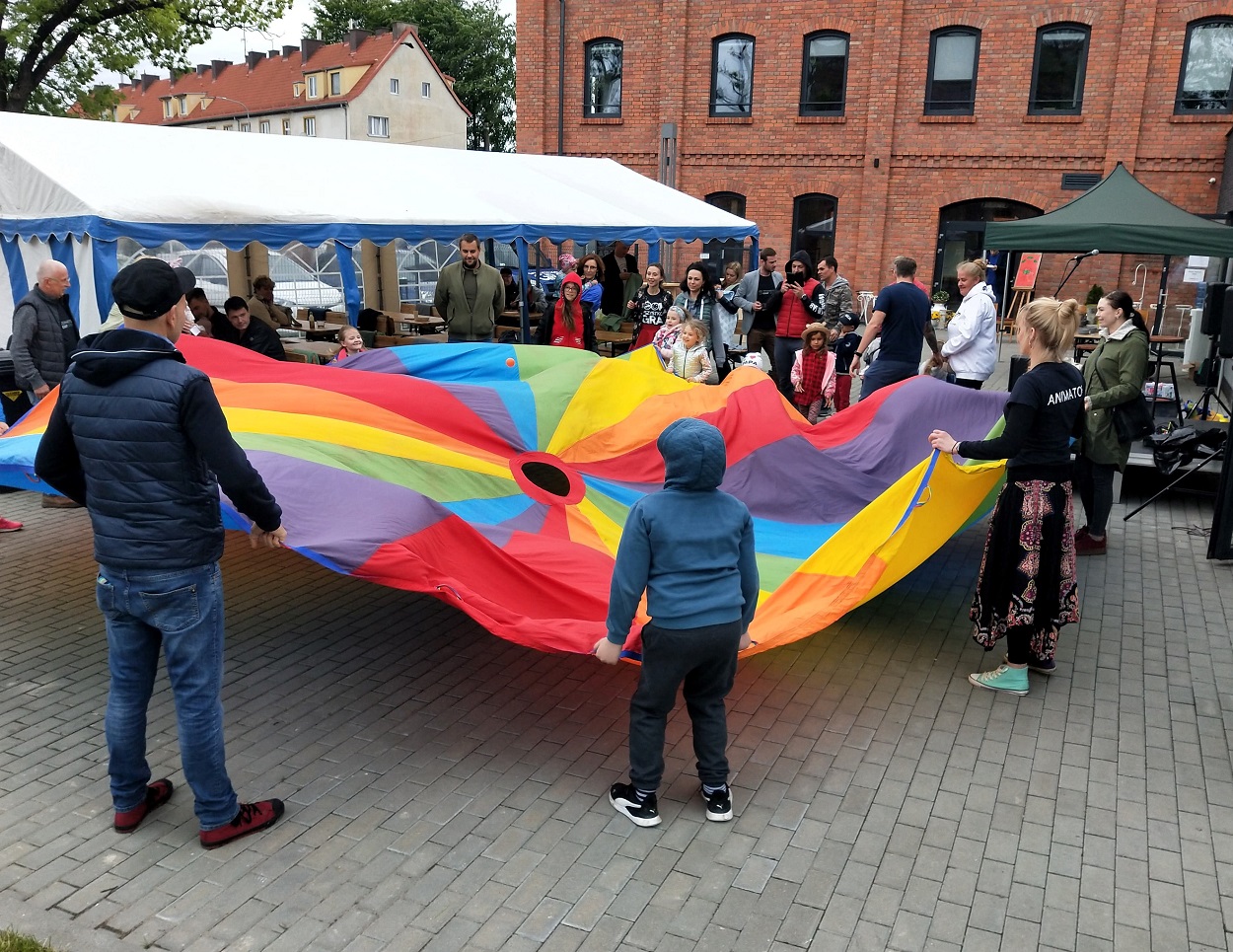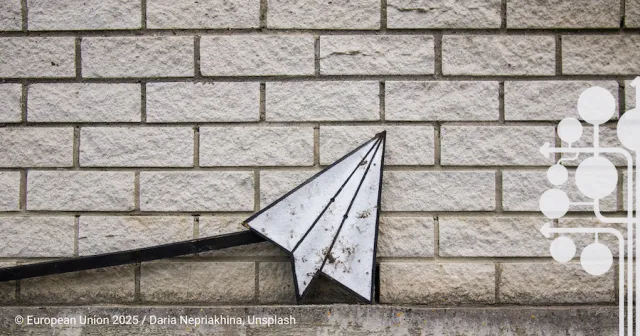We are all neighbours. Neighbourhood Houses and their animating and educative role
6 min read- like, share, comment!
First published in Polish by Monika Hausman-Pniewska
A war is raging just beyond the Polish border, the Covid pandemic has been claiming lives for over two years, we have started feeling the effect of climate change, and on top of that, fear and mistrust get the better of us more and more often - our reality poses a challenge to socio-cultural animators. They need new tools to remodel and redefine the world. Perhaps it is neighbourhood houses that will take on this challenge. We are all, after all, closer or more distant neighbours.

The First Neighbourhood Houses
The idea of community centres, also called neighbourhood houses, goes back to the 19th century. It originated in London when after the industrial revolution, a mass of new inhabitants constituting a cheap labour force started coming to cities. Samuel Barnett and his wife Henrietta pioneered the movement. They ran a parish in one of the most deprived parts of London. They organised help for their inhabitants and evening schools and proposed a cultural offer. Sometime later, the Barnetts started enjoying support from Arnold Toynbee, a university lecturer who thought that students should settle in deprived areas to live and cooperate with their local communities. That was the beginning of community centres providing education, cultural, sporting, social, recreational events, and other services. The oldest centres of that kind were founded in 1884 (Toynbee Hall, Aston-Mansfield and Oxford House). Their development was based on close cooperation with university workers, including sociologists involved in qualitative and quantitative research into the problems and needs of local communities. This idea also reached the United States, where it was disseminated by Stanton Coit and Jane Adams, among others (community centres in New York and Chicago). By the time the Great War broke out, four hundred such centres had been founded in the United States. At the turn of the 20th century, neighbourhood houses were established in Holland, Germany, Austria and Russia. This movement was the beginning of numerous initiatives and innovations in social policy. It aimed to improve the living conditions of the most excluded members of society.
It is not a building, it is a philosophy of action
A neighbourhood house is a place created by all inhabitants. Modern community centres do not continue the tradition of settling within them; however, they still focus on building a social capital based on trust, reciprocity and respect. They always strive to build a community in which there are no cultural, economic or social barriers. They are places involving inhabitants in activities to improve the situation of their community. They are open to all and do not target a particular age or social group. They are meeting places for families with children, young adults, teenagers and senior citizens, people from all walks of life, at different levels of education and of different financial status, not to mention different needs and resources. You can meet your neighbours and activists there, get involved in local initiatives, implement your ideas, participate in workshops, open meetings, and cultural events or just have a cup of coffee, read the local press or play board games.

PACA 40 Warsaw
The Community Centre, run by the CAL Association - Centre for Supporting Local Activity in Warsaw’s district of Grochów - respects the reciprocity principle: if you get something, give others something from yourself. If you take complimentary tea and coffee in the kitchen - buy some sugar for others to share, if you take part in free activities - do something for the others, for example, help the instructor to prepare the room or clean it or organise something yourself. You don’t know what you could do? Come to our place, and we will all think about it.
The Paca 40 Community Centre supports the development of the local community to make it integrated, robust, and active and enable it to make informed choices about important issues. This is a place for inhabitants, activists, informal groups, and non-governmental organisations, which may freely use the space, and run non-commercial workshops and education classes for Praga Południe inhabitants.
Per the idea of the CAL Association - Centre for Supporting Local Activity - animation work is the key element of each activity in public zones, and social changes are always initiated in local communities. This is possible thanks to involving human potential. “Discover the strength of the community!” - is the motto of CAL, which is currently discovering this strength also in a small neighbourhood house in Warsaw’s district of Wola.
Welcome Haven in Orunia (Gdańsk)
Since 2010, the Gdańsk Foundation for Social Innovations has been running the Orunia Neighbourhood House in the building of the ancient Oratory. The building belongs to the Salesians. They make it accessible to the Foundation to host its activities for the community. In its heyday, its function was similar to what it is today: Orunia inhabitants would meet there to spend time together.
The Welcome Haven neighbourhood house is a place open to the diversity of people and activities, releasing the potential of the Gdańsk Orunia local community. The Community of the Welcome Haven neighbourhood house is multi-generational. It includes the Kid’s Club, community day room, Young People’s Club and the Senior Citizen Club. The Welcome Haven neighbourhood house allows local inhabitants to pursue their passions, get involved in self-help groups, spend time together, participate in workshops and courses developing skills and use a complimentary Internet café.
The Welcome Haven neighbourhood house is also the hub for local democracy. This place hosts debates and inhabitant meetings aimed at spatial development and issues concerning their district, which they find important. It is also the seat of the Estate Council. City of Gdańsk Councillors have their duty hours here.
Yew House in Elbląg
This is the youngest of all the houses described here. It was open in 2019 to combine the functions of a neighbourhood house, social shop, and workshops run as part of a programme implemented by the Centre for Social Integration (CIS) in Elbląg’s district of Zawodzie. Before the war, it housed a soap production plant and then a stonemason’s workshop. After the war, it served as upholstery business premises and a warehouse. Thanks to the efforts of the ESWIP Association, the dilapidating building was rebuilt brick by brick and restored to its former glory. It has also changed its purpose and become a place for community activities.
“We do not want to be closed within four walls, we want to propose our initiatives to the whole district. We want to embellish things and take care of them to make living in Zawodzie more pleasant”
-say its socio-cultural animators.
The ground floor of the building houses the Yew Social Shop composed of three zones - the Targes.pl zone, selling unique products from the region of Warmia and Masuria; the Charity Zone - which gives its proceeds from sales to those neediest; and the Second Hand Zone, where things donated by inhabitants are given a new lease of life. There is also the Yew Café, where you can marvel at the Elbląg River panorama and have a coffee and a slice of cake.
The first floor of the building is occupied by the Neighbourhood House, a meeting place frequented by Zawodzie inhabitants and the Centre for Social Integration seat. It also houses the tailor’s and carpenter’s workshops already mentioned, which also renovate items brought by customers. The Yew Hostel is in the attic. It has five thematic rooms and a shared kitchen.
Neighbourhood Houses and their educative role
In community centres education is of key importance, although it is not always provided in the form of workshops and classes. Being involved in spatial planning in the neighbourhood house alone and the preparation of activity schedules teaches people to share their resources in a skilful way, think about all participants’ needs, also of those older or disabled. A shared space teaches tolerance, communication, conflict solving, cooperation trust, empathy, and many other skills useful in everyday life.
Moreover, the House organises a wide range of informal classes - workshops, discussion clubs, seminars, etc., which consider issues of civic and cultural education and that linked to starting a job and an enterprise, green education, language learning or new technologies - depending on people’s needs and capacities identified beforehand.
Today, when we have accommodated millions of Ukrainians fleeing the war, such shared spaces for activities as neighbourhood houses may offer real support and be instrumental in the integration of citizens of both countries.
In this article I have used:
- „Model Domu Sąsiedzkiego” (Neighbourhood house model) published by the Gdańsk Foundation for Social Innovation
- my own knowledge of the neighbourhood houses in question and the websites of the EWSIP Association, Gdańsk Foundation for Social Innovation and the CAL Assiciation - Centre for Supporting Local Activity.
Monika Hausman-Pniewska – trainer of social competencies, educator, supervisor and social animateur. For many years, she has been active in non– governmental organisations. She has close links with the FOSa Federation, where she works and manages a creative team of several dozen people. She focuses on adult education, holistic support of female and male leaders in their environment, organisational development and change. Co-author of innovations addressed to the elderly and people experiencing poverty and exclusion. Journalist, member of the editorial board of the senior citizens' magazine 'Generacja'. EPALE Ambassador.
Further reading:
Small steps, big changes. Social Animation for Rural Economisation




